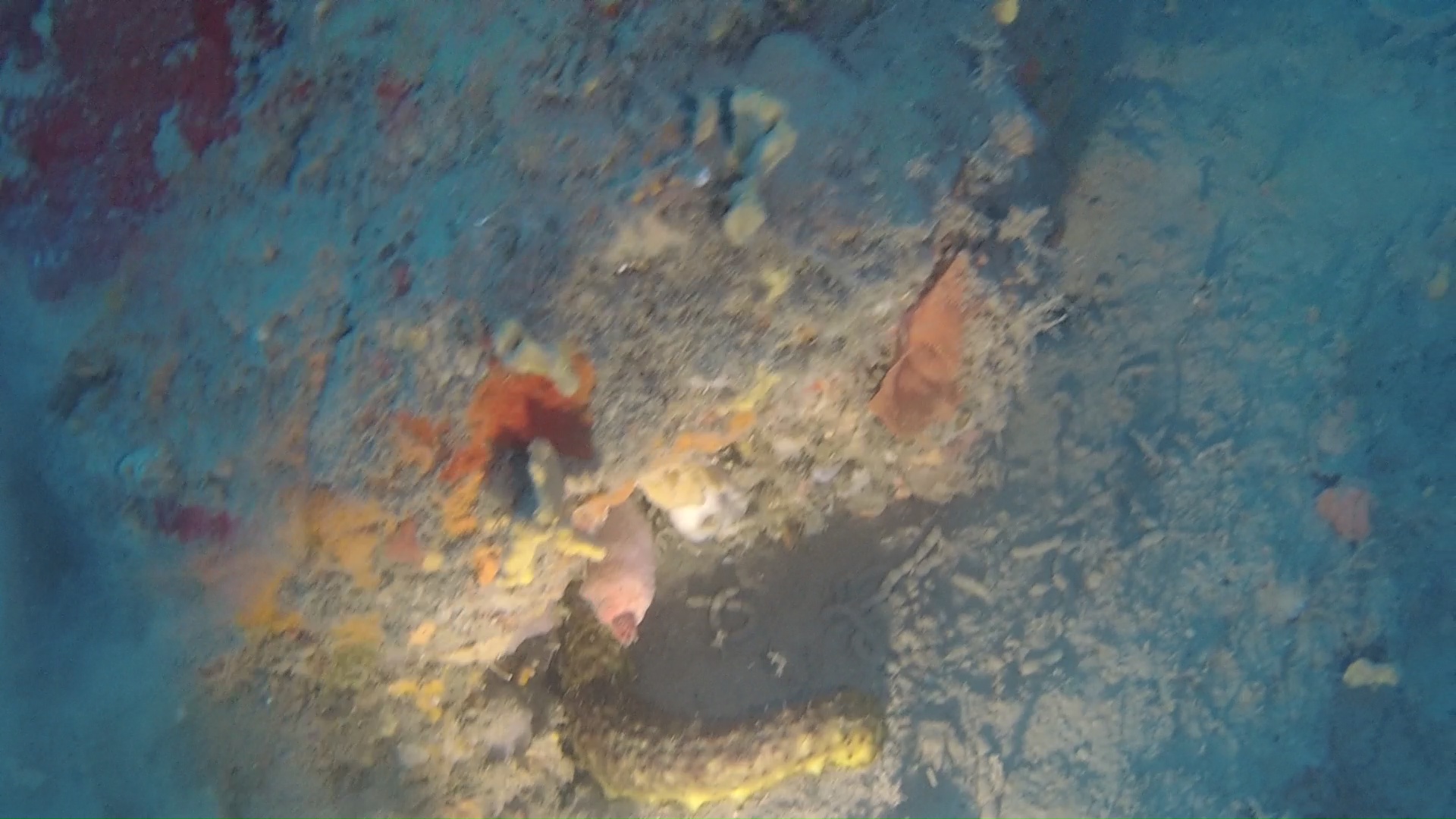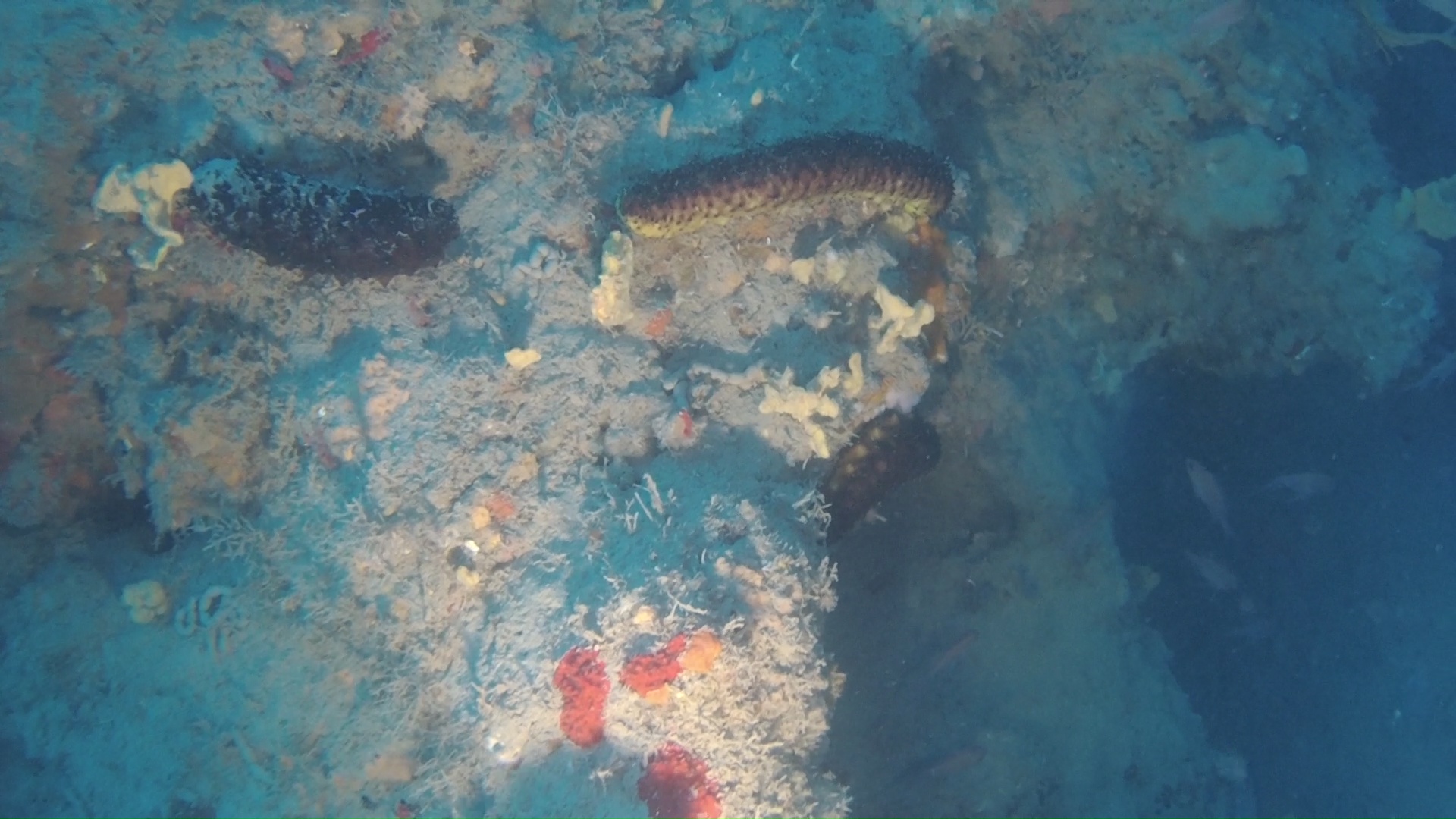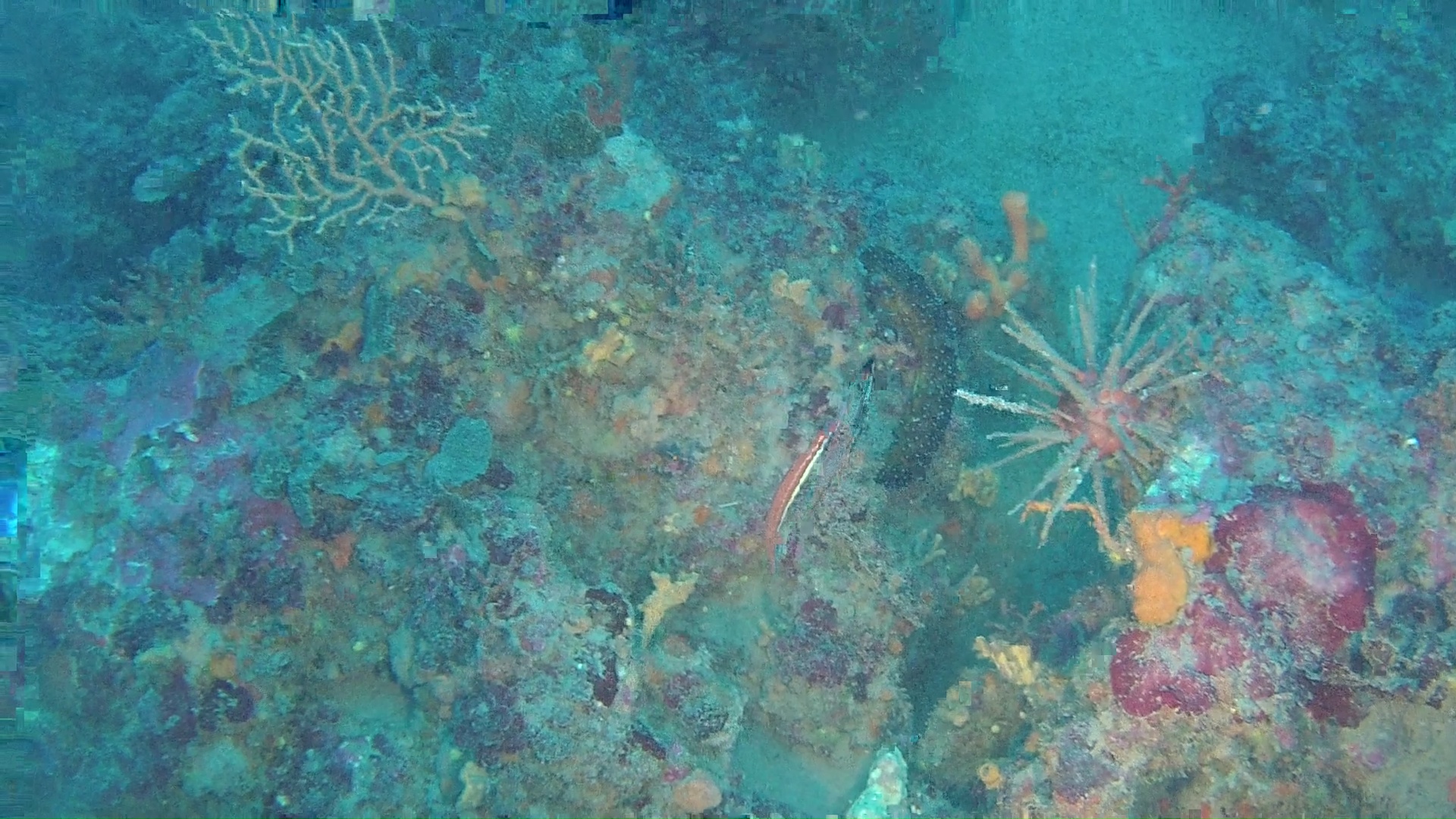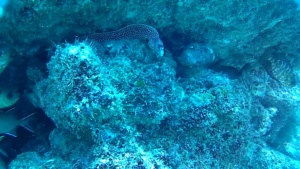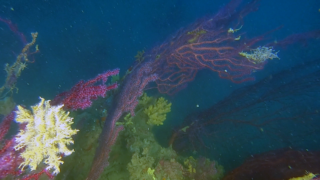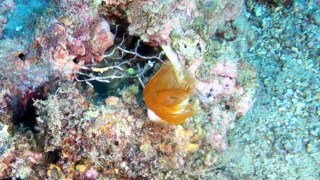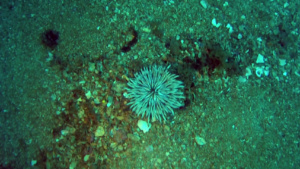Oloturia Sea Cucumbers intotheblue.it
The sea cucumbers are Echinoderms belonging to the Holothuroidea class. They are very widespread in the Mediterranean Sea and live in the seabed mixed with sand and rock but also in the muddy seabed. We can find them from a few inches deep to important depths.
The elongated body makes this animal look like a “cucumber”; At one end we find the mouth apparatus and in the other we find the last part of the intestine i.e. the cloaca.
In the lower face there are small stalks that allow the slow movement on the bottom.
The sea cucumbers are feed of animal and vegetable microorganisms that capture swallowing the sand, the mud or the pebbles found on the bottom absorbing the organic material and expelling the rest of the swallowed material. Oloturia Sea Cucumbers intotheblue.it
The sea cucumbers of the Mediterranean have a length that hardly exceeds 30-35 cm. What particular their ability to regenerate; In fact if they are divided into two or three parts each of them is able to recompose the whole animal with all its characteristics.
Echinoderms possess a unique water vascular system. This is a network of fluid-filled canals derived from the coelom (body cavity) that function in gas exchange, feeding, sensory reception and locomotion. This system varies between different classes of echinoderm but typically opens to the exterior through a sieve-like madreporite on the aboral (upper) surface of the animal. The madreporite is linked to a slender duct, the stone canal, which extends to a ring canal that encircles the mouth or oesophagus. From this, radial canals extend along the arms of asteroids and adjoin the test in the ambulacral areas of echinoids. Short lateral canals branch off the radial canals, each one ending in an ampulla. Part of the ampulla can protrude through a pore (or a pair of pores in sea urchins) to the exterior and is known as a podium or tube feet. The water vascular system assists with the distribution of nutrients throughout the animal’s body and is most obviously expressed in the tube feet which can be extended or contracted by the redistribution of fluid between the foot and the internal sac.
(extract from Wikipedia)
 English
English Italiano
Italiano
